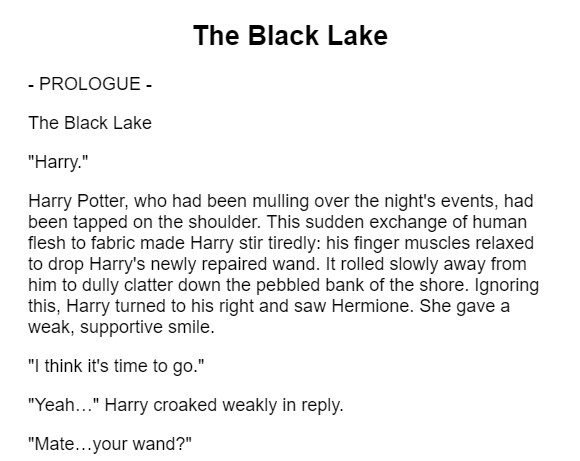

Getting foreshadowing right is all about using the right amount of emphasis. Do you introduce foreshadowing early enough? Does it pay off? Don’t leave readers complaining ‘but what happened to x?’ (unless you want to puzzle and possibly infuriate readers on purpose). If you don’t outline ahead of time, consider doing a reverse outline after finishing your first draft that just focuses on foreshadowing and the plot points your foreshadowing anticipates.
Rule 1 to avoid bad storywriting how to#
Having an overview of your story’s arc can help you decide where and how to introduce scenes or incidents that make us recall a significant, important earlier event. These reminders keep the mystery of the killer’s identity alive, despite the show exploring many other subplots.
Rule 1 to avoid bad storywriting series#
In David Lynch’s mystery series Twin Peaks, for example, he manages to sustain the audience’s curiosity about the identity of a killer who is not a member of the already-met cast by having the killer appear to characters in dreams and visions. If it does occur far ahead, include an occasional reminder of this significant plot point. Your foreshadowing should occur far enough in advance to tip off the reader but not so far ahead that the reader forgets about it. Whether you outline your novel in advance or not, you will probably need to think structurally to use this device effectively. Think about foreshadowing in terms of your structure.

Rule 4: Include plot foretelling at the outlining stage Otherwise, the reader is likely to feel cheated and confused regarding what is significant and worth remembering and what is incidental. However, the introduction of something major like a gun where it does not belong or a piece of shocking information (for example, a character discovering his colleague has committed fraud) needs to have a payoff later in the novel. It is not necessary for every element to have an important function at novel length. A novel has a bit more space to sprawl than either a short story or a play. There are exceptions, of course, to Chekhov’s advice. This idea, known as ‘Chekhov’s Gun’, is important for foreshadowing correctly. Otherwise, it should not be there at all. The brilliant playwright and short story author Anton Chekhov once said that if you introduce a gun in a story, it should go off at some point. Rule 3: Give the pay-off (like ‘Chekhov’s Gun’) For example, you might describe your character browsing a job-hunting website in Chapter 1, to foreshadow a hostile, untenable work situation in a subsequent chapter. If you are simply setting up a plot situation for later, and don’t want to create active suspense, your foreshadowing should be almost invisible to the reader.

This is the fun of foreshadowing – you can be more or less obscure, depending on the amount of mystery you want to create. You could even simply show your character hiding something, only later filling in the object’s identity. The reader might ask, ‘Is he planning a hit? Is it for self-defence?’ These are pay-offs your plot can deliver later. If you want to build suspense, your foreshadowing must be obvious enough for the reader to notice there is something going on.įor example, if you show your main character hiding a gun in his glove compartment, this foreshadows a violent event. The purpose of your ‘forewarning’ will help you determine how to foreshadow in a chapter or scene. Share or save infographic to embed Rule 2: Understand the purpose of foreshadowingįoreshadowing shows a character’s action or an object and says ‘pay attention, this is important.’ We use this to build suspense or prepare readers for a turn of plot that would otherwise seem unlikely. This is a cliche from the world of comic book superheroes. What’s a bad example of foreshadowing? If, for example, a character’s eyes change colour or glow when something is about to happen. Rowling’s Harry Potter and the Chamber of Secrets, sounds that portend the monster they later discover. Remember to save foreshadowing mostly for major events throughout your novel.Ī good example of foreshadowing: The strange sounds Hogwarts’ students’ hear in the walls in J.K. If you make a trivial event blown out of proportion, your writing assumes the melodramatic tone of a soap opera. Overusing foreshadowing can have an unintentionally comic effect. Not every story event does need an early warning or clue it’s coming. When planning the plot of your story or novel, make sure an incident needs foreshadowing before you include any. Here are 8 rules to foreshadow like a pro: Rule 1: Make foreshadowing relevant Learning how to foreshadow is a useful skill for creating well-structured writing. As a literary term, it means creating earlier scenes to build suspense, anticipation or understanding ahead of later plot developments. What is foreshadowing? Generally, the term means a ‘warning or indication (of a future event)’ ( OED).


 0 kommentar(er)
0 kommentar(er)
